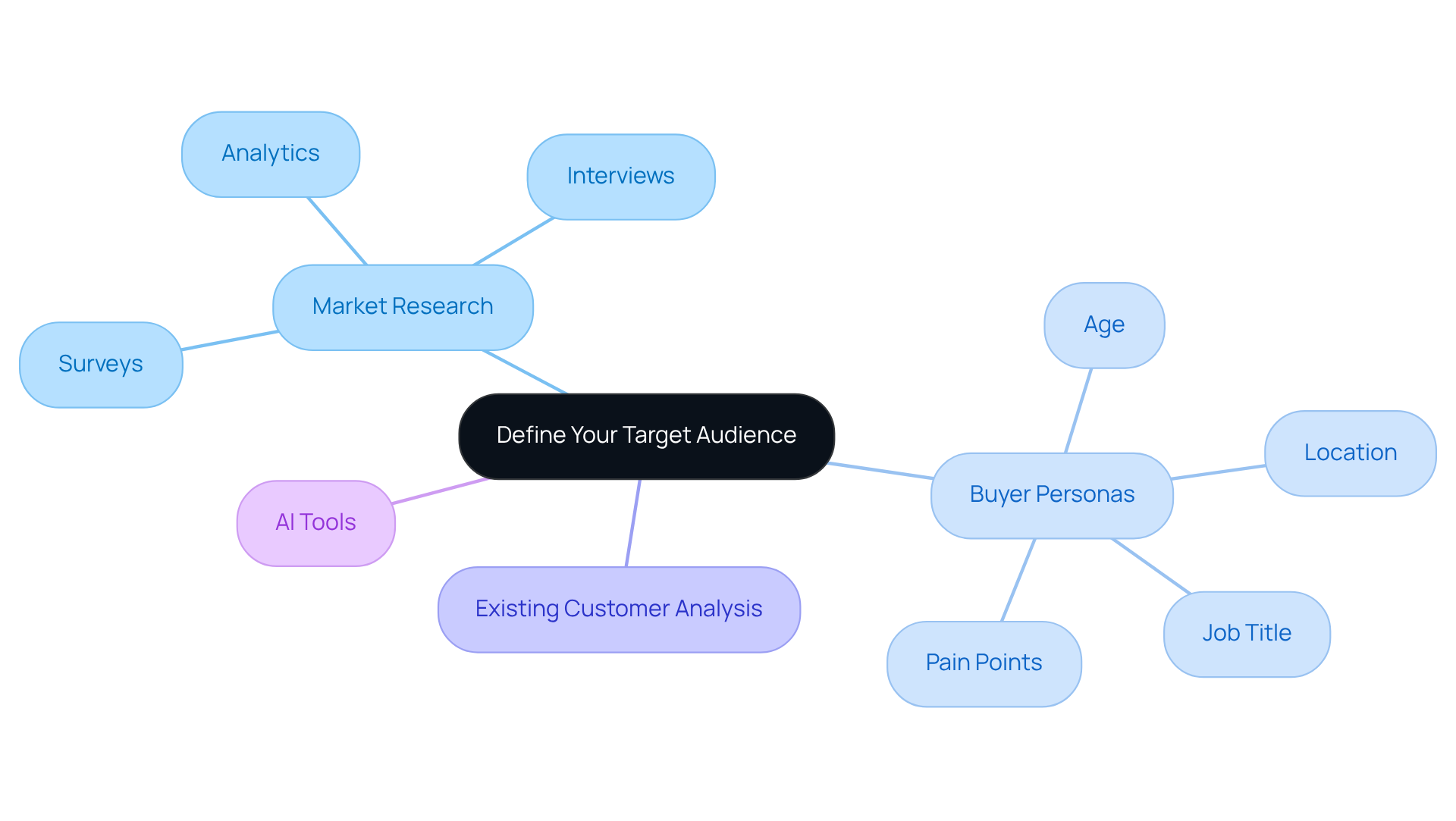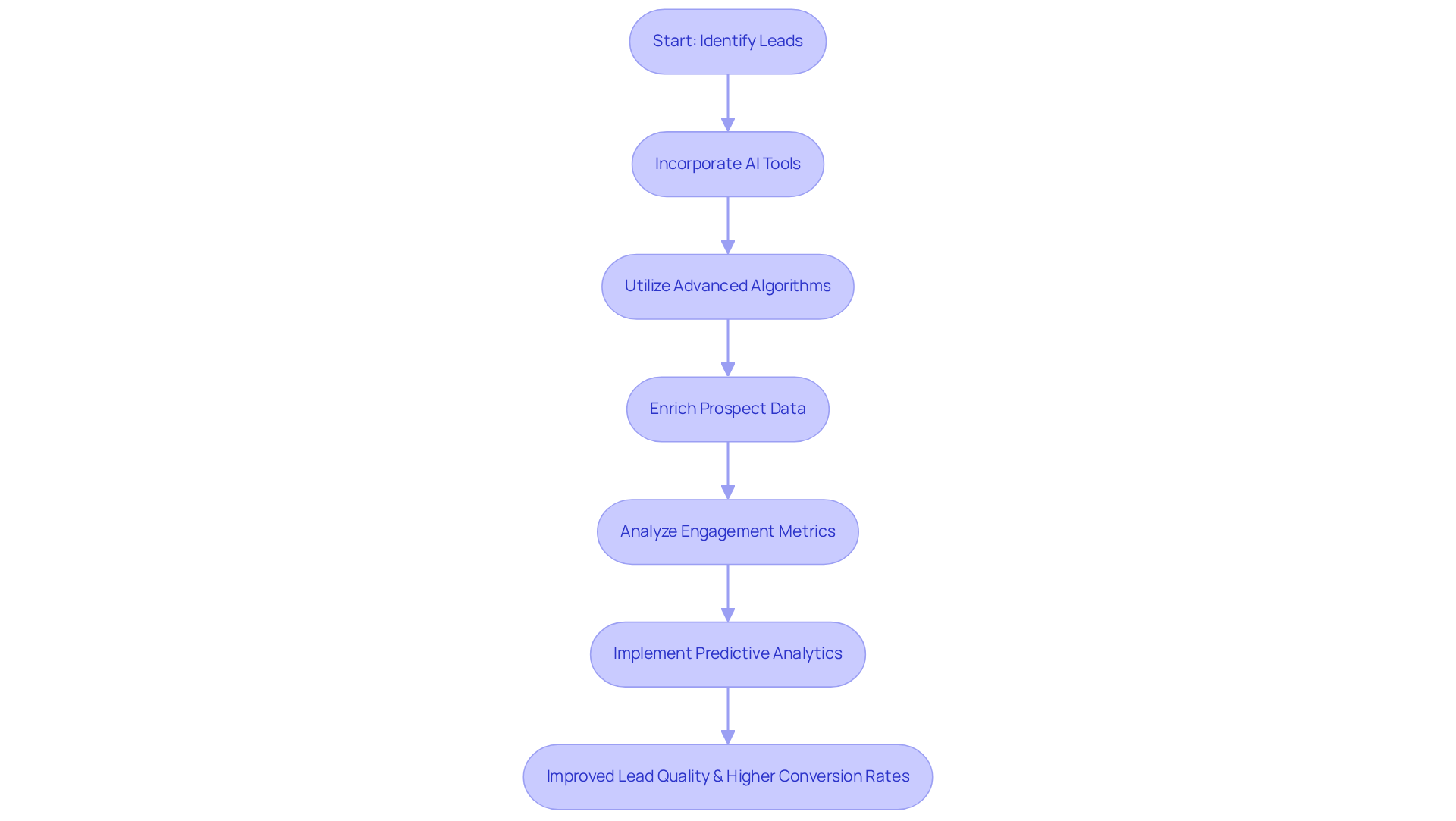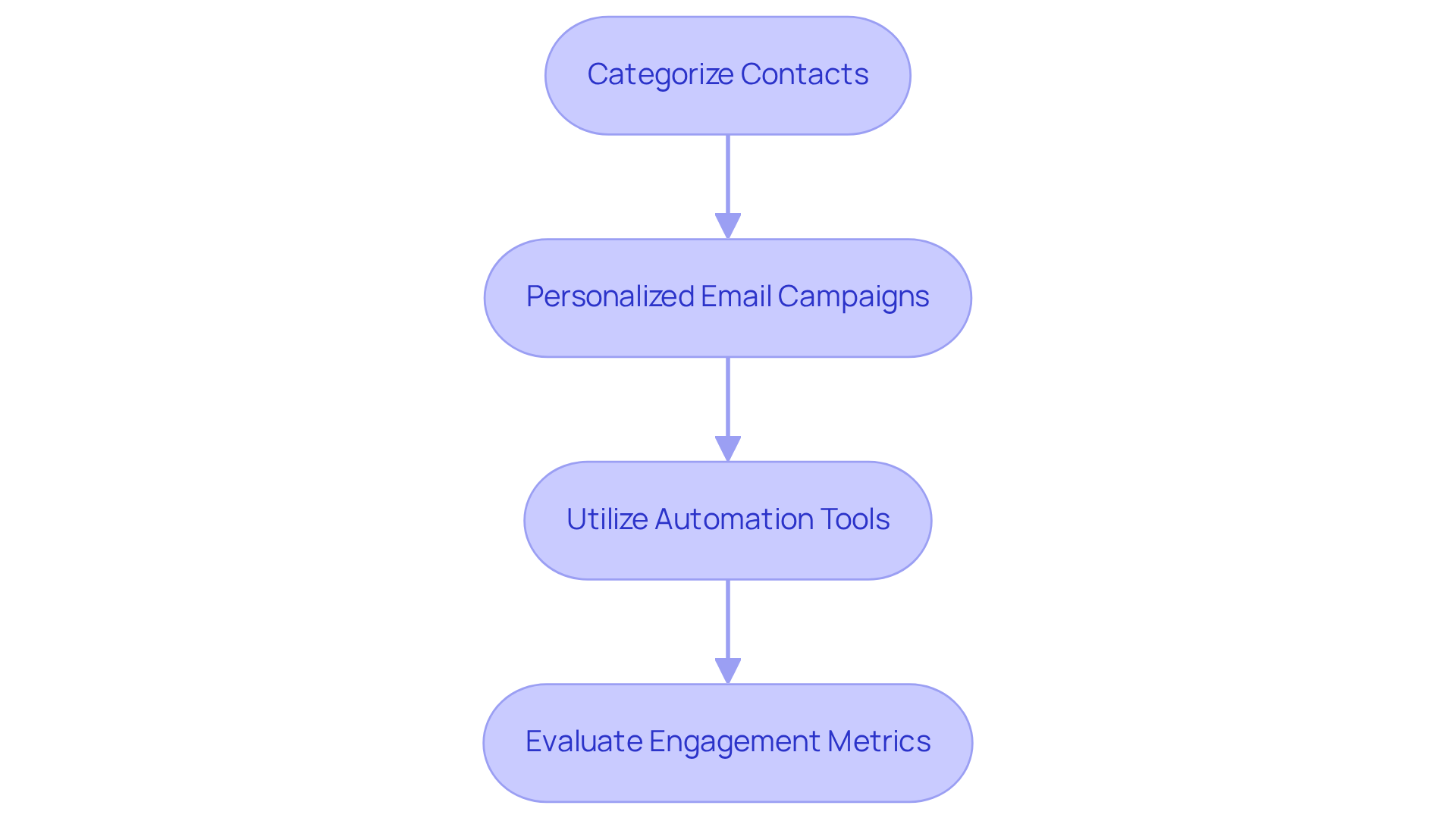Overview
Mastering key strategies for lead generation is essential for success. It begins with effectively defining target audiences, leveraging AI tools for enhanced discovery, and implementing personalized engagement strategies. By employing market research to create detailed buyer personas, utilizing AI for precise lead identification, and personalizing communication to nurture prospects, organizations can significantly improve engagement and conversion rates. These methods not only enhance the effectiveness of lead generation efforts but also foster deeper connections with potential customers, ultimately driving business growth.
Introduction
In a landscape where effective lead generation can make or break a business, understanding the nuances of target audiences is more crucial than ever. This article delves into key strategies that not only refine the process of identifying potential customers but also leverage cutting-edge AI tools to enhance outreach efforts. As companies strive to personalize their engagement and nurture leads, the pressing question arises: how can they ensure their strategies remain relevant and impactful in an ever-evolving market?
Define Your Target Audience for Effective Lead Generation
To effectively define your target group, initiate comprehensive market research. Employ tools such as surveys, interviews, and analytics to gather data on demographics, behaviors, and preferences. Develop detailed buyer personas that encapsulate your ideal customers, considering factors like age, location, job title, and pain points. This focused approach not only aids in crafting relevant marketing messages but also enhances your overall prospect generation strategy by looking for leads in high-potential segments. For instance, a sales team may discover that their ideal customer is a mid-level manager in the tech industry, allowing them to tailor their outreach accordingly.
Additionally, leverage existing customer information to refine your target group definition. Analyzing previous successful prospects can reveal shared traits and behaviors that inform future targeting initiatives. Regularly reviewing and updating your audience profiles is essential to adapt to evolving market conditions and consumer preferences, ensuring that your prospect generation efforts remain efficient and relevant. By 2025, the emphasis on buyer personas will be critical, as they not only enhance prospect generation but also align marketing strategies with buyer needs, ultimately driving improved engagement and conversion rates.
AI-driven sales intelligence tools can significantly streamline this process by looking for leads and providing precise lead generation at scale. Utilizing online tools, sales teams can identify businesses and individuals that meet , enriching their outreach with valuable information such as emails, company details, and job positions. Furthermore, these platforms allow for filtering candidates by skills and experience, enhancing the recruitment process. A recent study reveals that 91% of marketers are looking for leads in customer acquisition as their primary objective, highlighting the importance of effectively identifying target groups. Moreover, 75% of marketers believe that personalization drives sales and repeat business, underscoring the value of tailored outreach. As Tara Robertson aptly states, "Market the way you’d want to be marketed to… if I were the buyer, what would I want to know?" This perspective emphasizes the necessity of thoroughly understanding your audience, and with the right tools, you can achieve that insight more efficiently.

Leverage AI Tools for Enhanced Lead Discovery
Incorporating AI tools into your process of looking for leads can significantly streamline operations and enhance quality. Platforms that are looking for leads in B2B prospect generation and people search solutions leverage advanced algorithms to analyze extensive datasets. This enables companies looking for leads to identify potential opportunities based on precise criteria, including industry, company size, job title, and more, using hyper-specific filtering options.
Websets' facilitates rapid and accurate web information retrieval, equipping sales teams with relevant URLs and their contents in mere milliseconds. This capability is vital for enriching prospect data, providing additional insights such as LinkedIn profiles, emails, and previous work experience. Such enriched information empowers sales teams that are looking for leads to engage with prospects in a more personalized and informed manner. For instance, utilizing AI to analyze engagement metrics can reveal which prospects are most likely to convert, allowing teams looking for leads to prioritize their outreach efforts effectively. As noted, "AI can examine the browsing behavior, engagement history, and purchase patterns of prospective clients to forecast which prospects are most likely to convert."
Moreover, implementing predictive analytics can assist in looking for leads by forecasting prospect behavior and pinpointing emerging trends. By analyzing historical data, AI can assist in looking for leads that are more inclined to engage with your offerings, enabling more targeted marketing campaigns. This proactive approach not only saves time but also significantly boosts the likelihood of successful conversions. Companies that have adopted AI-powered customer acquisition tools report up to a 50% increase in prospect capture and conversion rates, underscoring the importance of these technologies in modern sales strategies. Additionally, AI scoring of prospects achieves up to 90% accuracy in predicting conversions, further enhancing the efficacy of prospect generation efforts.

Implement Personalized Engagement Strategies to Nurture Leads
To effectively cultivate prospects, it is essential to implement personalized engagement strategies that resonate with your audience while looking for leads. Begin by categorizing your contacts based on behaviors, interests, and their stage in the purchasing process. This segmentation enables tailored communication that directly addresses specific needs and pain points, which is essential when looking for leads, significantly enhancing engagement.
Utilize that speak directly to the recipient's interests. For instance, if a potential customer has shown interest in a specific product, send focused content that emphasizes its advantages, including case studies or testimonials from comparable clients. This approach not only builds trust but also positions your brand as a valuable resource. Research indicates that personalized emails can result in a 2.5 times higher click-through rate and yield an average increase of 5.7 in revenue, underscoring the effectiveness of this strategy.
Employ automation tools, such as those provided by other sources, when looking for leads to bolster your engagement efforts. 'Websets' AI-driven tools can facilitate timely follow-ups and deliver relevant content based on prospect interactions, ensuring that your communication remains consistent and pertinent. For example, if a prospect downloads a whitepaper, follow up with a tailored email offering a consultation or additional resources related to the topic, which can greatly improve the prospect's journey. Notably, 66% of marketers utilize automation when looking for leads, highlighting its prevalence and significance in contemporary approaches.
Consistently evaluate engagement metrics to refine your strategies. Monitoring open rates, click-through rates, and conversion rates enables you to determine what resonates with your audience and modify your strategy accordingly. Businesses that excel in prospect nurturing produce 50% more sales-ready prospects at a 33% reduced cost, emphasizing the importance of these tailored engagement strategies. As stated, "Nurturing prospects is a process that allows you to create enduring connections with your audience." By focusing on tailored communication and utilizing Websets' AI-driven tools, such as advanced analytics and automated workflows, you can enhance your efforts in looking for leads and drive higher conversion rates.

Conclusion
Defining and targeting the right audience is paramount for successful lead generation. By leveraging comprehensive market research and AI tools, businesses can refine their strategies and enhance prospecting efforts. Understanding the specific needs and behaviors of potential customers not only improves engagement but also drives conversion rates, making personalized outreach a cornerstone of effective lead generation.
This article emphasizes three key strategies:
- Defining your target audience through detailed buyer personas
- Utilizing AI-driven tools for enhanced lead discovery
- Implementing personalized engagement strategies
Focusing on these areas allows organizations to streamline their lead generation processes, ensuring they reach the right people with messages that resonate. Moreover, continuous evaluation and adaptation to market changes are essential, as they ensure that engagement remains relevant and effective.
In a landscape where competition is fierce, the ability to effectively identify and nurture leads can distinguish businesses. Embracing these strategies positions companies for success in lead generation and fosters deeper connections with potential customers. As the landscape evolves, prioritizing targeted, personalized approaches will be critical for driving growth and achieving sustained success in lead generation efforts.
Frequently Asked Questions
How can I define my target audience for lead generation?
To define your target audience effectively, conduct comprehensive market research using tools such as surveys, interviews, and analytics to gather data on demographics, behaviors, and preferences.
What are buyer personas and why are they important?
Buyer personas are detailed representations of your ideal customers, considering factors like age, location, job title, and pain points. They are important because they help craft relevant marketing messages and enhance prospect generation strategies.
How can existing customer information help in refining target group definitions?
Analyzing previous successful prospects can reveal shared traits and behaviors, which can inform future targeting initiatives and help refine your target group definitions.
Why is it important to regularly review and update audience profiles?
Regularly reviewing and updating audience profiles is essential to adapt to evolving market conditions and consumer preferences, ensuring that prospect generation efforts remain efficient and relevant.
What role do AI-driven sales intelligence tools play in lead generation?
AI-driven sales intelligence tools streamline the lead generation process by identifying businesses and individuals that meet specific criteria, providing valuable information such as emails, company details, and job positions.
What are the primary objectives of marketers regarding lead generation?
A recent study indicates that 91% of marketers are focused on customer acquisition as their primary objective, highlighting the importance of effectively identifying target groups.
How does personalization impact sales and repeat business?
According to 75% of marketers, personalization drives sales and repeat business, emphasizing the value of tailored outreach in connecting with potential customers.
What is the key takeaway from Tara Robertson's perspective on marketing?
Tara Robertson emphasizes the importance of understanding your audience by suggesting that marketers should consider what they would want to know if they were the buyer, which underscores the necessity of thorough audience insights.




